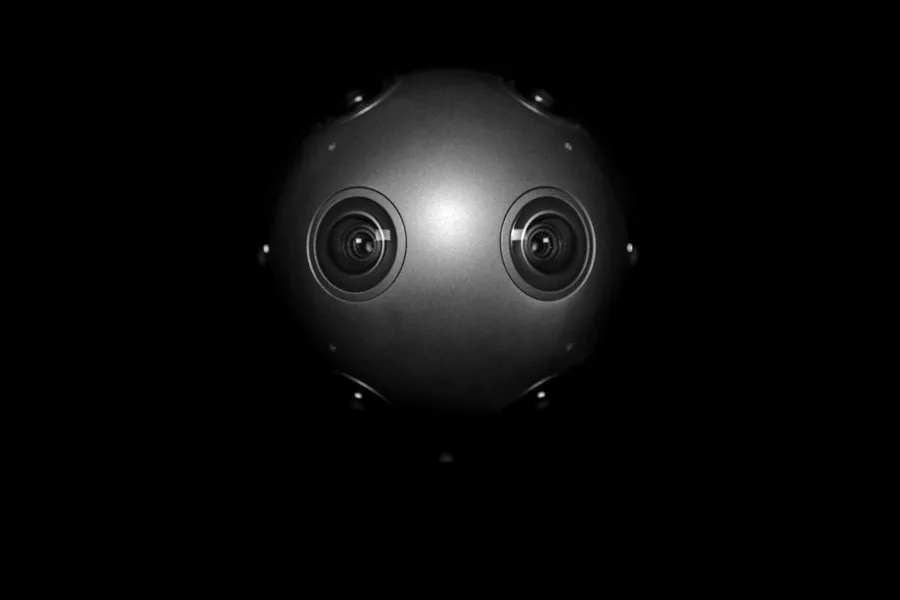Add another name to the roster of VR camera companies: Finland’s Nokia is making a VR camera, the Ozo. It’s sleek, it addresses some major pain points in VR production, and it’s made by a former manufacturer of feature phones and paper products. And no, it’s not a consumer camera: this thing is being built with professionals in mind.
(And yes, it’s the same Nokia that made your first phone, that indestructible brick that would probably still power up and take calls if you could find it.)
First, the camera. It looks like yet another ball of cameras — add this to the list that includes Samsung’s Project Beyond, Google Jump, Jaunt’s various cameras, even upstarts like Sphericam. But Ozo does ‘ball of cameras’ really well. It’s got eight lenses and sensors with synchronized global shutters. It covers the full 360-degree visual sphere, and it’s stereo 3D. Most importantly, it produces footage that our editor Will Mason describes as “some of the best VR live action content [he’s] ever seen.”
The camera was unveiled at an industry event in Los Angeles tonight, and Will had the pleasure of watching a few different clips — a news piece, a music video, and cinematic narrative (a comedy scene at a wedding, so it’s not cinema I’d watch, but still). It’s clear Nokia is aiming this camera at a lot of different verticals in the professional market, which an interesting departure: traditional video is served by a large array of cameras with different features and price points.
But it doesn’t sound like a compromise, because the needs of live action VR shooting are pretty particular. And some of the features that are necessary for, say, VR journalism turn out to be pretty necessary for cinematic VR production. For example, the system can do a quick on-the-fly stitch, which is essential for run-and-gun VR production. (Okay, it’s been described to me as more of a ‘quick fade between cameras’, but we can call it a stitch.) The Ozo can also deliver that quick-stitched view on playback after minimal processing, though not at full quality. If you have the time and budget, the camera retains the raw footage so you can hand-stitch the content for better results.
In addition to the quick-stitch view, the Ozo supports live monitoring. This dual ability to monitor in the field is absolutely, completely essential… and also lacking in most live action VR production, at least for the full-sphere view. Likewise, the Ozo has a single, unified battery and storage, so the crew is not dealing with 16 different chargers and microSD cards on set, a power- and data-wrangling nightmare. That’s the ‘tail’ jutting out of the the back of the rig.
So yeah, you can shoot professional content, see what you’re getting, and you can move the footage around without juggling dozens of drives. (“No, cards with dark-blue tape are for camera 7, that’s the left eye pointed 60 degrees right, and that card has a checkmark so it hasn’t been backed up yet….”) But there are also some downsides — it tops out at 30 frames per second, which is definitely lower than ideal for VR presence. Pricing is TBD, but it should be in the five figures, which is unaffordable for many (but a typical price point for digital cinema gear, for what it’s worth).
Nokia will be beta testing starting at the end of August to refine the product, and plans to make it commercially available in Q4 of this year. Oh, and VR industry stalwart Jaunt was announced as a partner; the Palo Alto-based startup will offer the Ozo for use on its projects, in addition to supporting postproduction for Ozo-derived footage. (Between the in-house rigs, Jump, and now this, Jaunt must have quite a collection of cameras in their garage by now.)


























